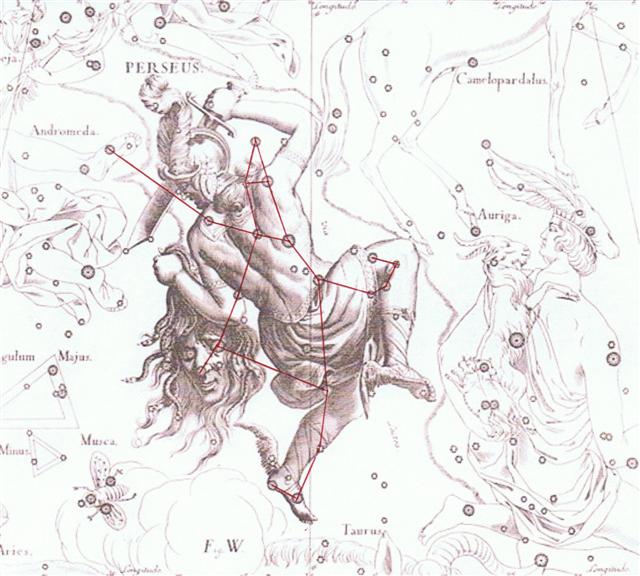Line Ca2 is a continuation of line Ca1. Counting from March 21 there are 52 days to the end of line Ca2 and this probably alludes to the 52 weeks in a year. Counting days from the beginning of the previous Gregorian year we will find April 9 to be day 464. The manzil calendar has its day number 329 corresponding to April 10 and in rongorongo times Antares was rising heliacally in Gregorian day 329:
The heliacal position of Achernar (α Eridani) at the bottom of the 'River' seems to be contrasted with Polaris at the top of the celestial sphere. In between, and corresponding to the sky equator is a 'head' located in the vertical center of the line. In rongorongo times Polaris rose heliacally in April 17, which is day 8 * 59 = 472 counted from the beginning of the previous year. 472 - 365 = 107.
In May 5 (day 125) the head of Cetus, the Sea monster, rose heliacally above the equator of the sky, 'personified' by Menkar (α Ceti). Metoro's poo pouo is here contrasted with his puo pouo ('covered by the headgear poouo') at March 16, 50 days earlier (cfr Ca13-18). The position is manzil day 354 (= 6 * 59):
Algol (β Persei) was at right ascension 3h, and this star is represented in the illustration of Hevelius by the left eye of the head of the Gorgon demon:  ... The star that Ptolemy called ‘the bright one in the Gorgon head’ is Beta Persei, named Algol from the Arabic ra’s al-ghul meaning ‘the demon’s head’. (As an aside, al-ghul is also the origin of our word alcohol - quite literally ‘the demon drink’.) Algol is the type of star known as an eclipsing binary, consisting of two close stars that orbit each other, in this case every 2.9 days ... In the Musca (Fly) asterism - equal to the 2nd (yoni) Hindu nakshatra station - the ruling star Bharani (41 Arietis) rose heliacally in May 1 (manzil day Al Muahkhar 13):
This 'flying spirit' (manu rere) escaped from the gorgon's head. We can understand this from the picture of Hevelius but also by reading the rongorongo text, because the vai ('sweet water of life') glyph in May 1 is identical with the Algol glyph in May 6. The Bharani star could represent the right eye of the gorgon Medusa. | |||||||||||||||||||||||||||||||||||||||||||||||||||||||||||||||||||||||||||||||||||||||||||||||||||||||||||||||||||||||||||||||||||||||||||||||||||||||||||||||||||||||||||||||||||||||||||||||||||||||||||||||||||||||||||||||||||||||||||||||||||||||||||||





















